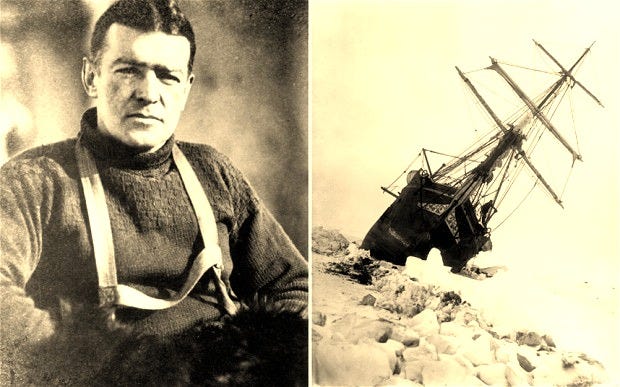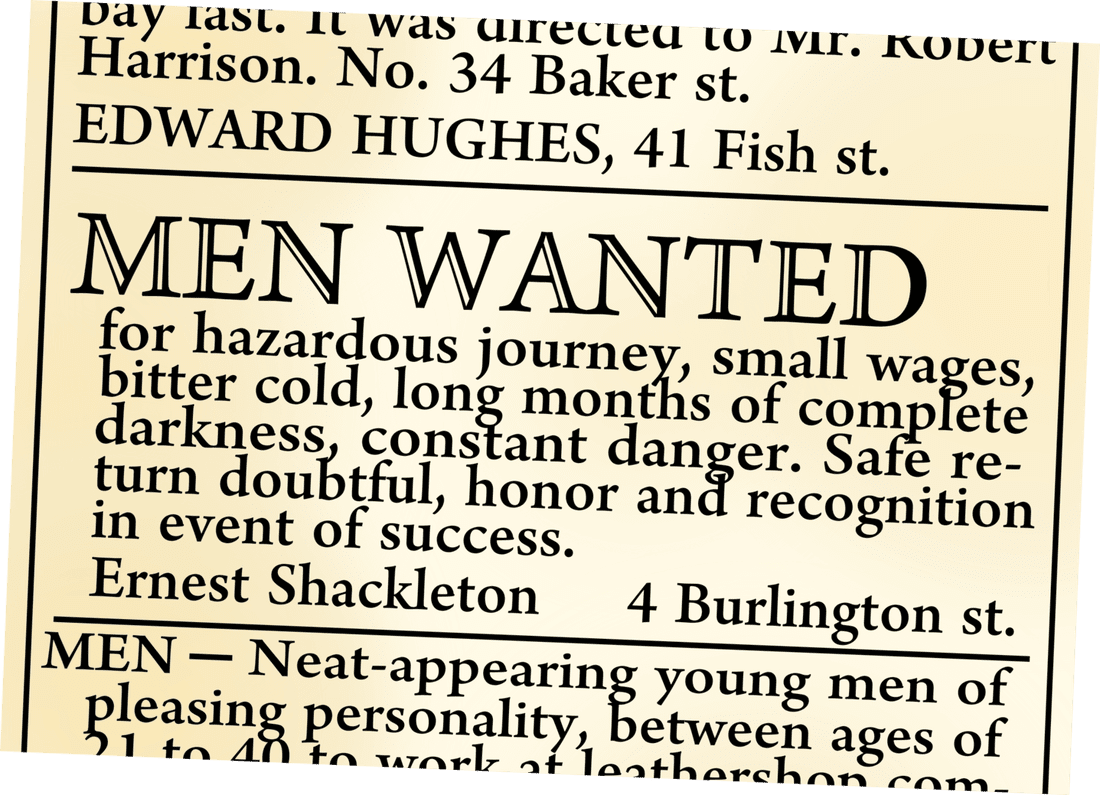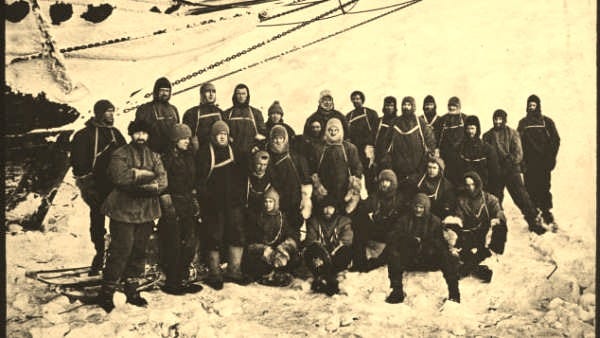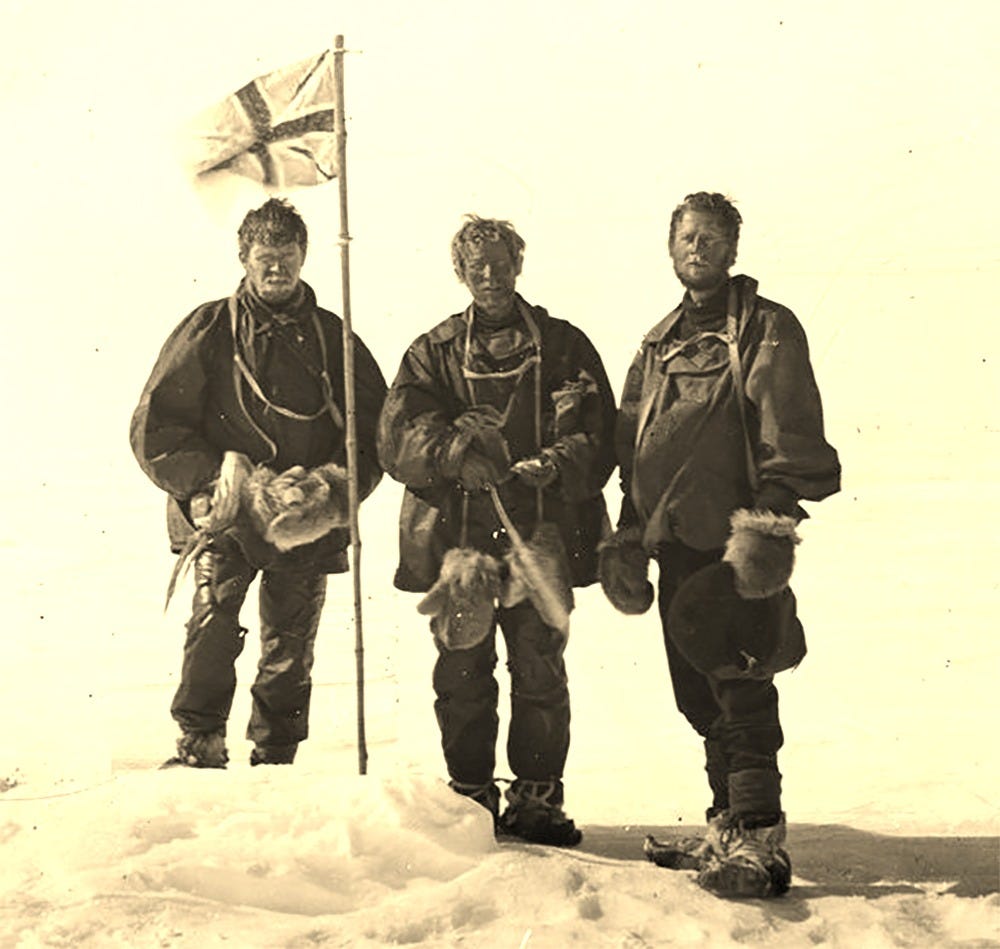The Job Ad That Promised Death
It also built one of the greatest teams in history.
Startups are Antarctic expeditions in hoodies. The map’s incomplete. The weather’s turning. And no one’s got a clue what they’re doing. The struggle’s not a bug, it’s a feature. If you sell the dream and skip the pain, don’t be surprised when you end up with fair weather travelers.
You might have guessed, I went down a Youtube rabbit hole about polar expeditions. More specifically, how one of the most dangerous and underfunded expeditions in history built the most loyal and legendary crew ever assembled.
It all started with the most legendary founder-led recruitment message of all time.
This ad that broke the internet (in 1914 if the internet existed)
Legend says Sir Ernest Shackleton posted this ad in a London paper before his 1914 Imperial Trans-Antarctic Expedition:
“Men wanted for hazardous journey. Low wages, bitter cold, long months of complete darkness, constant danger, safe return doubtful. Honour and recognition in case of success.”
He didn’t sugarcoat anything. He didn’t try to “sell the vision.”He sold the pain. And 5k men applied.
He didn’t hide the constraint. He featured it.
And that did three things:
Filtered for resilience: No one stumbled into that expedition by accident. You had to want the hardship.
Increased commitment: The harder the entry, the stronger the identity.
Bonded the team: Everyone joined eyes wide open, ready to suffer together.
This was psychology. And Shackleton intuitively understood what modern hiring still forgets.
People who volunteer for a hard path are wired for it. When you choose hardship with eyes open you stick. The tougher the entry the stronger the post rationalisation and loyalty.
In other words the constraint is the feature.
The way Shackleton picked candidates sounds insane by modern standards.
Asked physicist Reginald James if he could sing (he could, he was hired).
Took men “on sight” based on gut feel.
Chose those who made him laugh.
Let a 19-year-old stow away stay onboard after he was discovered mid voyage.
But when the Endurance was crushed by ice and they were stranded for two years?
No one died.
Every early-stage founder today is Shackleton.
You’ve got:
No funding
Uncertain roadmap
High risk of failure
Zero perks
Stop pretending it’s something else.
Let’s call it what it is.
You’re asking people to join your Antarctic expedition.
But instead of:
“Hazardous journey. Bitter cold. Safe return doubtful…”
You’re writing job posts like:
“We’re a dynamic team building the future of AI infrastructure…”
No one believes that. And worse you're attracting the wrong people.
Write the pain first. Do not bury it in bullet 14.
Example: You will ship with incomplete specs. You will own things you have never done before. There is no safety net.
Tell them why the pain is worth it. Equity with numbers. Direct access to the founder. Code to production in hours not quarters.
Get them to walk you through the hardest thing they shipped with no clear brief. Ask what they did when production went down at 3am. Ask what they taught themselves last year and how they proved it worked.
Day one you restate the constraints. You show the cap table. You map the first ninety days with real deliverables. No surprises later.
High autonomy. High coaching. Real ownership. If you ask for pain you owe support.
Avoid edgy posturing instead of honest clarity.
Copy this JD template Prompt
Role
Founding engineer
Reality first
You will ship fast with incomplete information. You will work on weekends when production breaks. You will own things you have never done before. There is no safety net.
Why it is worth it
You will design and build the core system that the company scales on. You will own real equity. You will work directly with the founder.
Your decisions will show up in the product in days not quarters.
What you must be
Calm when things break
Teach yourself anything fast
Thrive in chaos, not handbooks
Write it down so others can move fast
What the first 90 days look like
Week 1: ship X
Month 1: own Y
Month 3: redesign Z
Compensation
Lower cash than market. Real equity. Transparent vesting. We share the cap table and model the likely outcomes in the first call.
Apply if reading the pain section made your pulse quicken. Skip this if you need specs, process, or backup dancers. The north star of recruiting
Shackleton showed that brutal honesty can create the strongest crew. He didn’t hide the suffering. He used it to build trust.
And when everything fell apart, that meaning is what kept the team alive.
No ping pong tables. Just clarity, commitment, and the kind of people willing to follow a brutally honest leader into the ice.
Until next week, keep building. No fairytales required.
Martin
P.S. this week’s track is Wake Up by Arcade Fire







Hey Martin, thanks for the shoutout, means alot!
Love the article by the way, indeed clarity, commitment is so powerful in building the kind of trust that keeps teams together for the long-term.
Brilliant stuff!
Martin, I wonder if you have ever watched the great Brit TV series "THE LAST PLACE ON EARTH" (script written by the late, great Trevor Griffiths), which contrasts the Norwegian and UK expeditions that raced to be first to chart the South Pole. Might be some additional grist for your mill there from a founder dynamics perspective. (Plus it includes a brief reference to Shackleton, too, that I think you'll find interesting.)